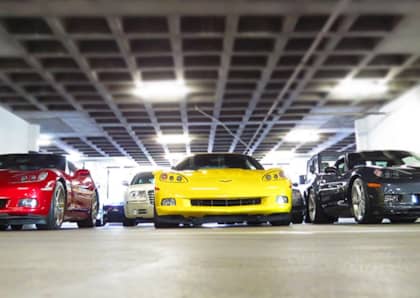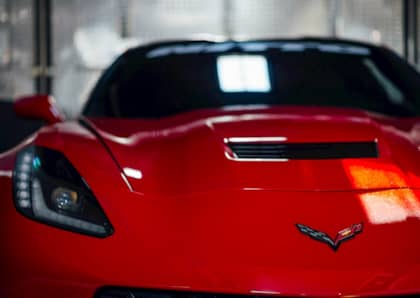Secrets of the 2014-2019 C7 Chevrolet Corvette Chassis Revealed: Why It Works So Well, And What You Can Improve
The C6 Corvette—especially the Z06 and ZR1 models—took Chevrolet's sports car to previously unimagined heights, creating a package that could legitimately be considered a competitor on the world stage with more exotic contenders from both Japan and Europe.

When it was time to develop the C7 Corvette, there were questions as to how much further the vehicle's front-engine / rear-drive architecture could be pushed in terms of performance. Rather than reinvent what had already proven to be an extremely capable platform—the 'backbone' frame that had initially appeared under the skin of the late-'90s C5—Chevrolet's design team elected to focus on reducing weight as much as possible while simultaneously improving on the strength of seventh-generation Corvette's platform.

While this might sound like a simple evolution of a familiar concept, in reality the decision required a complex re-think of how the Corvette's structure was built. This was made possible by the latest engineering software and brand-new construction techniques never before used by Chevrolet.
Go Light Or Go Home
Early on, the decision was made to leave the Corvette's steel past behind and go all-aluminum across the board for the C7 model. This meant that not only would the base version of the 2014-2019 Chevrolet Corvette coupe feature the same lightweight chassis as the Z06, but that the convertibles would also benefit (and open them up to Z06 and ZR1 trim levels of their own for the first time).

Chevrolet got serious about its aluminum initiative, spending tens of millions of dollars to refit its plant in Bowling Green, Kentucky to produce the new C7 platform in-house. These updates were also necessary to make real the next-generation's chassis, which was about to make a clean break from its hydroformed past.

Hydroforming had proved to be a quantum leap forward for the C5 Corvette when it debuted in 1997, increasing the vehicle's overall stiffness versus the C4 that preceded it, providing a single-piece frame rail along each side of the vehicle that was remarkably resistant to twist.

Two generations later, however, traditional hydroforming presented a problem to the C7's weight watchers. The production process allows for no variance in material thickness, which means each section of the frame uses the same amount of aluminum. Given that some areas of the Corvette required more strength than others, this saw designers adding mass to areas that could do with less.

The solution was to turn to a new software design program called 'Genesis,' which allowed Chevrolet to create five separate aluminum frame segments with thickness varying from 2 mm to 11 mm, which were then joined together to form a single rail. This distributed the platform's mass to the areas that needed it most without creating any unnecessary waste that would add weight to the vehicle. The platform was assembled from stamped, extruded, cast, and hydroformed components, and was 57 percent stiffer than that found on the C6.
Lighter, Stiffer, Quicker
The end result was impressive. When it debuted in 2014, the Corvette (dubbed the 'Stingray) weighted in at 3,298 lbs, which was just a smidge more than the 3,132 lbs posted by the C6 Z06, and 100 lbs lighter than the C6's steel frame models.


Chevrolet was further able to engineer the chassis for aerodynamic efficiency. This meant routing air and cooling through gaps and spaces in the platform to assist with cooling, reduce drag, and improve downforce at higher rates of speed.
Linear Steps For Improving Performance
In terms of suspension options, the vehicle maintained the Z51/Z06/ZR1 step-up, with a Grand Sport model aimed at track fans putting in an appearance and Chevrolet's magnetically-adaptive dampers continuing their sophistication. The vehicle also featured an electronically-controlled rear limited-slip differential for the first time.

In addition to the tried and true method of installing next-trim components on a base model Corvette, Chevrolet also offers numerous performance kits for the C7 Stingray, often incorporating the requirements of various racing series rulebooks into the specs of the shocks, control arms, and swaybars included within. In addition, Chevrolet Performance offers custom tunes for the MagnaRide system, further expanding the modes sandwiched between 'comfort' and 'track settings. This is on top of the vast aftermarket aimed at the C7 platform, which of course continues to provide a full coilover replacement for the Corvette's leaf spring setup.

The C7 represents the end of the line for the front-engine Corvette, with the C8 model moving into mid-engine territory. There's little doubt that the seventh-generation of Chevrolet's iconic performer took the platform's potential to the apex of what could be achieved in a traditional sports car layout.











